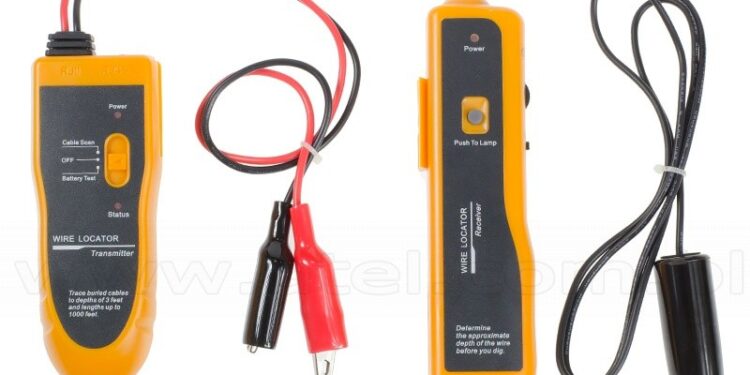The Best Underground Cable, Pipe, and Wire Locators for 2021

If you undertake any kind of outside job, you’ve probably heard the saying, “Call before you dig.” This isn’t just basic sense; it’s the law in most areas. Utility companies will label their cables and pipes across your property if you call ahead. As far as it goes, this is all well and good.
Underground Utility Locator Ridgid
Ridgid is well-known for their power tools, which have a lifetime warranty. What is less well-known is that Ridgid also manufactures a wide range of industrial tools. The Ridgid Underground Utility Locator contains three independent antennas that are offset by 120 degrees in two different lobes. There are another two gradient antennas in their own lobes, for a total of eight antennas. This means that you can pick up a signal from any direction or angle. All of the sensors are on a wand that is connected to a huge yellow control unit and handle. This design makes it simple to use the controls with your thumb while holding the unit.
Functions
The Ridgid underground wire locator offers various extra features, as one would anticipate from a higher-priced machine. There are several modes that can be employed for various scenarios. The line tracer operates in both active and passive modes. Active mode allows you to search for specific frequencies ranging from 10 Hz to 35 kHz. This allows you to track almost any active wire on the planet.
Procedures for Locating and Marking Underground Cables
If you have the necessary instruments, finding an underground cable is a rather simple operation. It may, however, take some time and effort to find both the target cable and any other neighbouring utilities.
1) Select the Appropriate Locator
It is critical to choose the correct locator before attempting to locate anything. There are two kinds: utility locators and magnetic locators. The first detects electromagnetic signals, whereas the second detects magnetic fields. Magnetic fields are only produced by iron and steel. So, for the majority of cables, you’ll need a pipe and cable locator.
2) Determine Whether an Active Signal Is Required
Determine your location strategy next. If you’re seeking for powered wires, you should start with a passive signal. You may require an active signal as you close in on your target.
3) If necessary, use an active signal
Connect your transmitter to the cable you’re looking for if necessary. This will cause a separate electromagnetic signal to be transmitted via the connection. This active signal can be distinguished from other, passive signals by your receiver.
4) Determine the Cable’s Most Likely Location
Before you begin sweeping, make an educated guess regarding its location. This is typically possible using surveyor’s blueprints or designs from when the utility was installed.
5) Use the Locator to Sweep
Begin with a lesser sensitivity and move your pipe and cable locator in broad sweeps across the ground. Attempt to locate the target signal by moving slowly and deliberately.
6) Narrow Your Look
Increase your sensitivity and perform little sweeps when you begin to discover the signal with a coarse sweep. You’ll eventually find a spot where the signal is the strongest.
7) Make a note of the first cable location
Mark the location of the first affirmative signal with some form of marking. Stakes, surveyor’s nails, and paint are common tools. If you want to return at a later time, a surveyor’s nail might be the best option. This can be easily located again by sensing its magnetic field.
8) Trace the cable and mark each location with a marker
Follow the cable’s signal as you move slowly. Mark the path it takes from the surface to the required place. Before you start digging, make sure to check for other utilities in the same location. It is advisable to the cable locator suppliers to test for both passive electromagnetic signals and magnetic fields.






